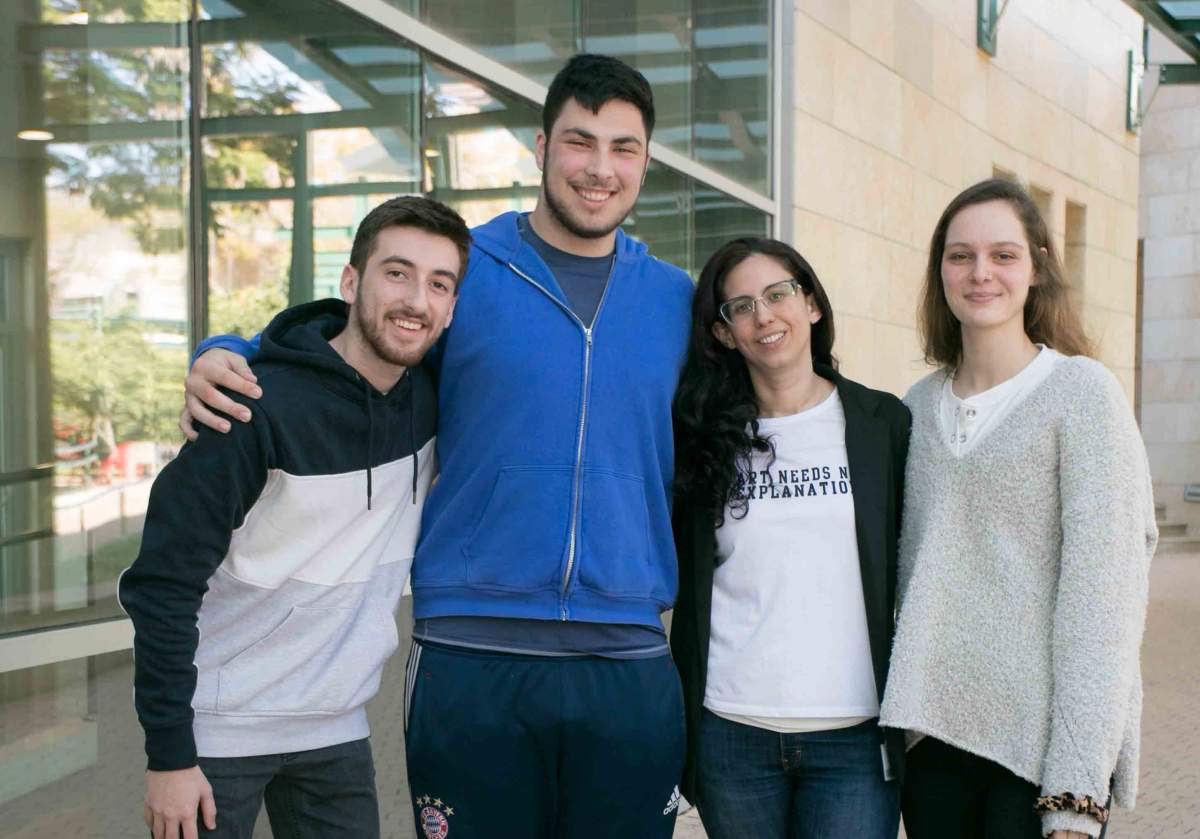Are you a journalist? Please sign up here for our press releases
Subscribe to our monthly newsletter:

Around 1,250 high school students come twice a week to the Arnon Campus of the Schwartz/Reisman Science Education Center, where they spend four hours immersing themselves in physics. The students, who come from the cities of Rehovot and Ness Tziona to the campus tucked in one corner of the Weizmann Institute of Science, have all chosen the physics track in their schools, and even as they experiment in the advanced labs in the Center, they are preparing for the highest level of the national matriculation exams in physics. “For us, this place is the physics track,” says Amit Waxman, who comes from the Ben-Gurion High School in Ness Tziona. “We get to work with advanced lab equipment, and we have teachers who are, themselves, involved in conducting research.”
The campus recently reopened following the end of the corona lockdown, and the students, who kept up with their lessons online, were busy finishing up their studies and projects in preparation for their exams and graduation.
The idea for a center that would provide trained instructors and equipment for high-school students choosing science tracks was first realized in Tel Aviv, in the HEMDA center (an acronym for science education) founded by Prof. Haim Harari. The original center focused on all science education, but especially on physics. The success of this center inspired Prof. Daniel Zajfman, some seven years ago during his term as president of the Weizmann Institute of Science, to establish a similar center on the Institute campus. When the Center first opened its doors, some 300 students enrolled, and the numbers have continued to swell ever since. “I come here with another 70 students from my school,” says Omer Bernstein, a student in the nearby de-Shalit High School. “I love these lessons most of all my classes, especially the opportunity to participate in fascinating national and international projects.”
The center provides the entire curriculum for students on the physics track, and the approach includes learning in small groups, developing scientific thinking, building on experiments, including a wide breadth of knowledge and providing excellent teachers. The campus was built with the generous support of Prof. Ruth Arnon and Dr. Uriel Arnon; in addition to the physical buildings, the Arnons have established a fund to maintain and upgrade the Center’s equipment. Other support comes from the Schwart/Reisman Foundation and the Benoziyo Foundation; and the municipalities of Rehovot and Ness Tziona provide annual support as well.
Athlea Leesin of the Katzir High School in Rehovot says she has a dual track – physics and art. “Using the 3-D printers in the Gelfand FabLab made me realize I could combine them,” she says.
We have teachers who are, themselves, involved in conducting research
Dr. Ronen Mir, Head of the Schwartz/Reisman Science Education Center, obtained his doctorate in physics from the Weizmann Institute of Science, and he has spent much of his life making science accessible to the general public. Through this work, he connected with Eli Shalev in the Tel Aviv Center, and the two developed a vision for science education that would break the mold, basing their ideas on thinking about the meaning of education, in the broadest sense of the word. Working on their ideas, says Mir, they “raised the number of students choosing the physics track to around 25% in the upper grades in Rehovot and Ness Tziona schools, and we raised the percentage of girls in those groups from 26% to 38%.”
In light of the success of the program in Tel Aviv and Rehovot, new centers are being opened around the country. All told, some 4,000 students currently benefit from the science education centers created on this model.
“We need to create a network of these centers, and to build them not just in places that already have good matriculation scores, but out in the periphery. That is what will really advance science education in Israel,” says Mir. He is working on a plan in which local governments will participate by providing the space, and he and his team will work to share their knowledge, experience and resources.